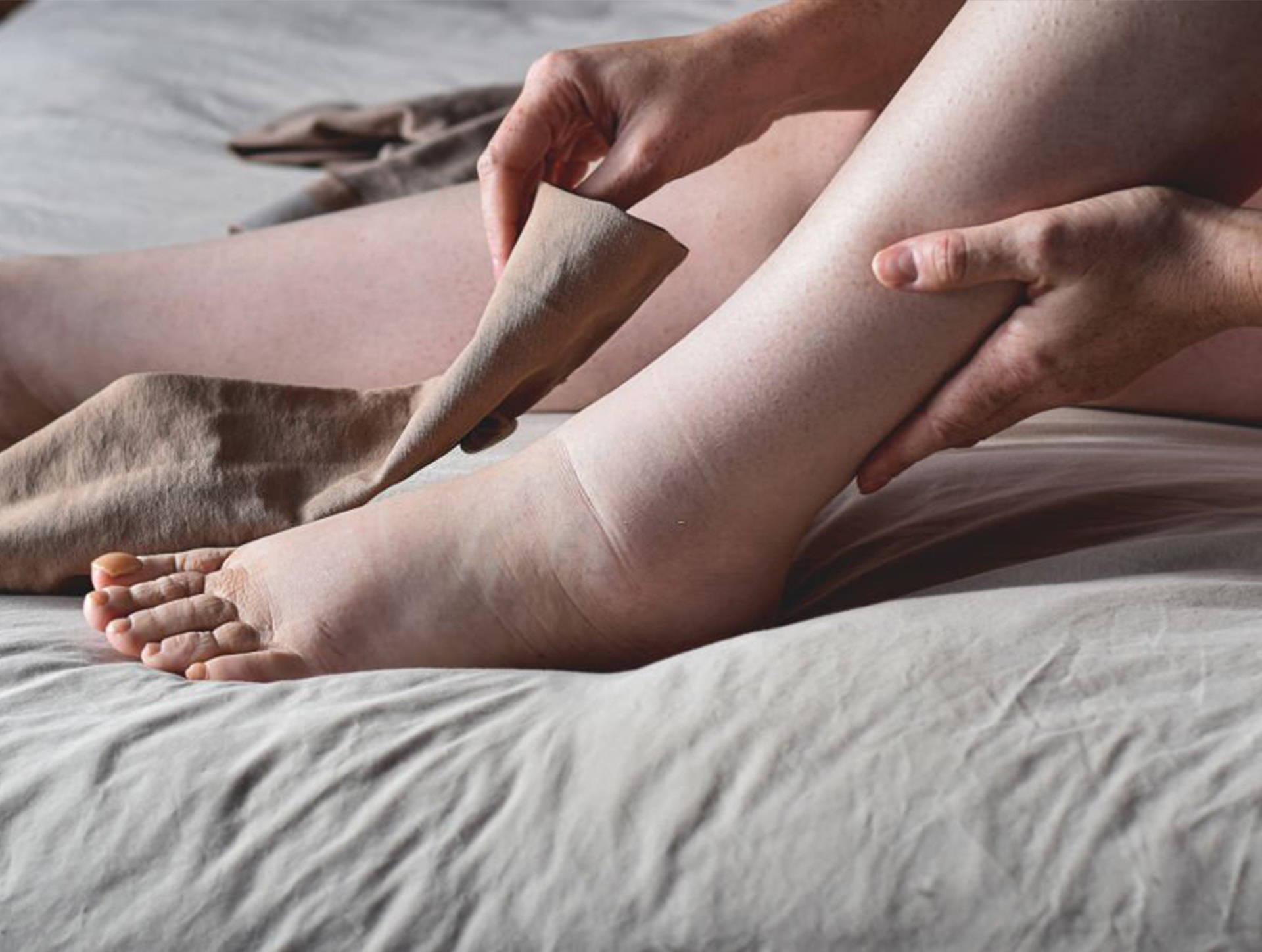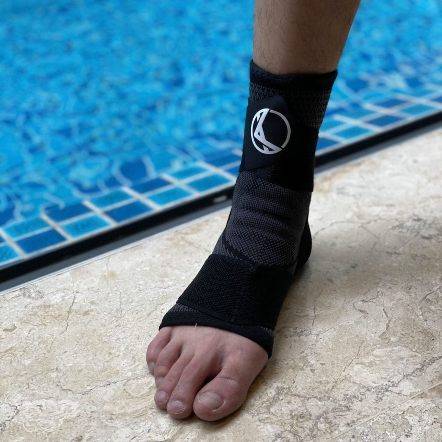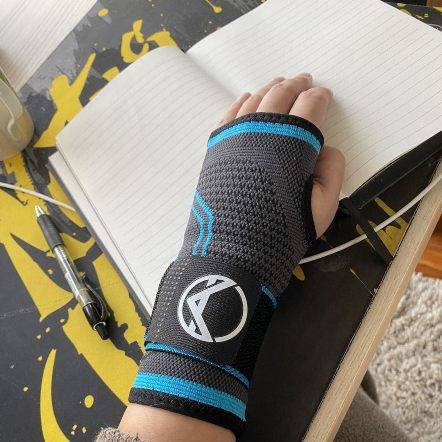
Compression Socks for Lymphedema: What You Need to Know
June 19, 2023 | 4 Mins Read
TABLE OF CONTENTS
2. What Causes Lymphedema in Legs?
3. Are Compression Socks Good for Lymphedema?
4. The Best Compression Level for Lymphedema in Legs
5. How Long Should You Wear Compression Socks for Lymphedema?
6.Is it Bad to Wear Compression Socks at Night for Lymphedema?
7.How Do You Choose The Best Compression Socks for Lymphedema?
8.What Are The Other Ways to Combine with Compression Socks to Help Manage Lymphedema?
When managing lymphedema, compression socks can be a valuable and effective tool. These specially designed garments apply controlled pressure to the affected limbs, aiding in the reduction of swelling and promoting better lymphatic flow. However, it is crucial to have a comprehensive understanding of compression socks for lymphedema to make informed decisions.
This article aims to provide essential information on what you need to know about compression socks for lymphedema.
From understanding their benefits to seeking reputable brands, this guide equips individuals with the knowledge to effectively incorporate compression socks into their lymphedema management routine.
Lymphedema is a condition that occurs when the normal flow of lymph fluid is obstructed or disrupted, leading to the accumulation of excess fluid in the tissues and subsequent swelling.
It typically happens as a result of damage or blockage in the lymphatic system, which is responsible for transporting lymph fluid throughout the body to remove waste, toxins, and bacteria. When the lymphatic system is compromised, the fluid cannot flow properly, causing it to build up in the affected area.
The most common areas affected by lymphedema are the arms and legs, although it can also occur in other parts of the body. The swelling can range from mild to severe, and it may cause discomfort, heaviness, or limited mobility in the affected limb.
There are many possible causes of lymphedema in the legs, including diseases or disorders that affect the lymphatic system. Some of the common causes include:
It's important to note that lymphedema can have other less common causes as well, but the aforementioned factors are the most frequently observed triggers for lymphedema in the legs.

Yes, compression socks can be beneficial for managing lymphedema. They work by applying gentle pressure to the affected area, which helps to reduce and control the accumulation of lymph fluid.
Compression garments, such as socks or stockings, create external pressure on the tissues, preventing the fluid from building up and promoting its movement toward areas with better lymphatic drainage. This helps to alleviate swelling and discomfort.
For a step-by-step guide on how to wear compression socks, read this guide.
For long-term management of lymphedema, it’s important to use compression socks that are properly fitted for your needs. As a general rule, the best compression level for lymphedema in legs is 30-40 mmHg (millimeters of mercury) or higher.
You can go for a lower level of compression if you have mild lymphedema or general leg edema while the highest level of compression one can tolerate is up to 60 mmHg.
Read here to know more about how tight should compression socks be for therapeutic purposes.
For effective management of lymphedema, it is recommended to wear compression socks or garments on a daily basis. Put them on in the morning and wear them throughout the entire day, maintaining consistent compression. It is advisable to remove the socks before going to bed and wash them for the next day's use. Regular washing helps prevent infections caused by bacteria or fungi.
While it is permissible to remove the compression socks when elevating your legs, it is important to keep them on when walking or sitting with your legs down. This ensures continuous support and compression to prevent fluid buildup and maintain the proper lymphatic flow throughout the day. Following these guidelines for wearing compression socks is crucial for the optimal management of lymphedema symptoms.
While it is generally recommended to remove compression socks at night for lymphedema, wearing them during sleep for short periods is not necessarily harmful. Wearing compression garments 24/7 can be hard on the skin, and nighttime provides an opportunity to allow the skin to breathe and apply lotion.
However, wearing compression socks during sleep for short durations can be considered if it provides additional relief or support. It's important to consult with a healthcare professional to determine the most suitable approach for wearing compression garments based on individual needs and circumstances.

When choosing compression socks for lymphedema, it is important to select a product that provides the right amount of support and comfort. When selecting compression socks for lymphedema, consider the following guidelines:
By considering these factors, you can make an informed decision and choose compression socks that effectively address your lymphedema needs.
While there is no cure for lymphedema, there are various treatment strategies that can help manage the condition and reduce its symptoms. In addition to wearing compression socks, other ways to help manage lymphedema include:
Medications may be prescribed to address certain aspects of the condition. Antibiotics can be prescribed to reduce the risk of skin infections (cellulitis), a common complication associated with lymphedema. Having antibiotics on hand allows for prompt treatment when symptoms of infection appear.
Specialized lymphedema therapists can provide guidance on various techniques and equipment to help reduce swelling. Examples include:
In more advanced stages (3, 4, or 5) of lymphedema, certain surgical procedures may be recommended:
These additional management approaches, when combined with compression therapy and other lifestyle modifications, can help individuals with lymphedema reduce swelling, prevent complications, and improve their overall quality of life.
When looking to purchase compression socks for lymphedema, there are various options available. One recommended brand is Koprez®, known for providing medical-grade compression socks.
Koprez® offers compression socks specifically designed to increase blood flow, facilitate lymphatic fluid drainage, and assist in managing lymphedema. These socks can be purchased through our official website.
By opting for reputable brands like Koprez®, individuals with lymphedema can find high-quality compression socks to aid in the management of their condition. Shop today for the best compression socks for lymphedema!






References
Author

Claire Evans worked as the content marketing manager at Koprez. Claire combined a background of writing and editing, marketing, and patient education to best serve consumers, fitness enthusiasts, athletes, and anyone who relies on the Koprez brand for helpful information.
Koprez® Featured Products


"I sprain my wrist super often, so I decided to try out this sleeve. This is game-changing! I've been using it for a while now, and my wrists feel amazing. I haven't gotten in any injuries since using it too. It just makes my wrists feel so supported."
Alexis A.


"Use this for my boxing training. It is a very comfortable brace and does not move out of position during skipping ropes and sparring sessions. I use it while running too. Probably the best brace I've purchased throughout the years. It is very flexible. Makes me look like a pro! :)"
Samuel L.


"I've just got back to running after a couple of years of being plagued by injury. These compressions socks are helping give me peace of mind while I build up my distance again. They are the perfect level of compression, super comfy, and very high quality. Feel great while on a run, and looks great in the orange colour I have!"
Dave R.


"I have a weak ankle, and the Koprez ankle sleeve has been a lifesaver. Wear it every day. Super breathable and comfortable. Like wearing a cool sporty looking sock!"
James F.


"This is the best knee sleeve I've ever tried. It's now a must-have for all my exercises. A few years ago, I had an accident that damaged my knees, but with Koprez I can be active again with no knee pains at all. It's been truly amazing!"
Alex M.


"One of the best purchases I've ever made. It fits your legs all the way from top to bottom, great snug fit, gives you support and definitely helps during rehab and training."
Rafael A.


"I had a minor elbow injury, and Koprez sleeve was super supportive and definitely helped me recover faster. I still use the sleeve to prevent further injury. So far, so good. Very comfortable and does not feel hot at all. Highly recommend!"
Corey B.


"It's really been a game-changer for me. It allows me to exercise a lot longer than I used to. Now my knees don't hurt, and they're not uncomfortable at all."
Mike P.


"Great product!!"
Harold


"I have carpal tunnel, and this brace has helped me work pain-free. Love the materials, and I can feel my wrists slowly getting better, even when I don't wear them!"
Christopher J.


"I wanted to try out these sleeves to improve my squats and deadlift in the gym without worrying about injuring my knees. They stayed up throughout the entire gym session, and my knees feel super supported. Now I can do what I love for years to come. "
Corbin C.